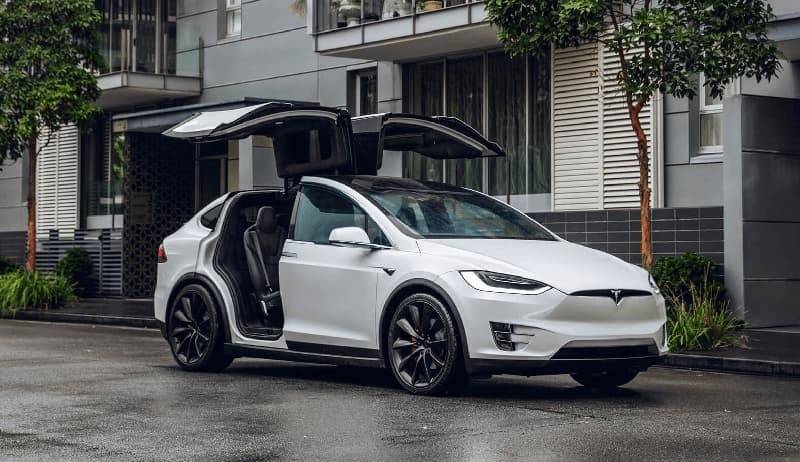A few years ago, a lot of people felt that electric cars were an overly-expensive option – especially considering their often-limited range. Now though, the perception of electric vehicles is changing. The cost of electric cars is dropping – and, as battery technology develops along with alternative fuel cells are discovered – the range that even the cheapest electric car will cover is increasing significantly.
Now though, the perception of electric vehicles is changing.
The cost of electric cars is dropping – and, as battery technology develops – the range that even the cheapest electric car will cover is increasing significantly.
EV cars now look like a very real option for millions of motorists around the UK – but where do you start if you’re keen to go electric?
We’ve put together a detailed look at what we consider to be the best electric cars the UK has to offer – and we’ve answered a handful of helpful questions about new electric cars in 2020.
Which technology is right for you?
At the moment, any vehicle that uses some element of electric technology often gets referred to as an electric vehicle or ‘EV’ – but in truth, there are actually distinct types of electrically powered vehicle.
The three main types are:
- Battery Electric Vehicles (BEVs): For BEVs, the onboard battery is the only power source – and they must be plugged-in to recharge. Only BEVs are capable of charging on a ‘level 3’ DC fast charge – the fastest type of charger available in the UK currently.
- Hybrid Electric Vehicles (HEVs): In a HEV, a battery-driven electric motor is used to reduce the workload of the internal combustion engine. It’s not possible to plug an HEV in; instead, the battery recharges as the vehicle is in use.
- Plug-in Hybrid Electric Vehicles (PHEVs): A PHEV is similar to a HEV – but has a much larger capacity battery to allow for more electric-only driving. When the electric power is depleted, the vehicle works like an HEV – but the size of the on-board battery means it will need to be plugged in to fully recharge.
Although they’re far less common, there’s another type of alternatively fuelled vehicle (AFV) that’s worth a mention – the Hydrogen Fuel Cell Vehicle (FCV). Hydrogen FCVs work by combining oxygen from around the car with hydrogen carried on board the vehicle. When the elements combine, they create a chemical reaction that generates electric power – which is used to drive the wheels. FCVs are another type of electric vehicle – but their large price tags and limited availability have meant they’ve not caught on as much as other eco-friendly vehicles here in the UK.
Generally, it’s only pure battery electric vehicles that are considered to be true ‘EVs’ – so they’re the vehicles that we’re going to explore here.
The battery technology in these pure-electric vehicles has come on a huge amount in last decade – but even the best electric cars on the market won’t be right for everyone. If you’re regularly covering big miles, the lack of charging infrastructure around the UK might mean that a true electric vehicle isn’t practical. In cases like these, a self-charging HEV or plug-in hybrid might look like the more sensible option.
Of course, there’s also the issue of charging your battery-operated EV – which is tricky (or often just impossible) if you rely on on-street parking. The government are helping to fund the development of on-street charging solutions – but UK-wide roll-outs aren’t going to happen anytime soon.
All that said, if you’ve got access to a charging point (or somewhere to install one) and your daily mileage allows for it, an electric car can represent a big saving. Electric car prices are generally offset by the fact that electric is significantly cheaper than petrol or diesel, and also because EVs require less servicing than traditional fuel cars.
If an EV is right for you, we’ll walk you through the top electric cars in each category.
The best electric cars in 2020
It’s tricky to decide on an overall best electric car or top 10 electric cars – after all, for every person who wants blistering speed and sleek looks, there’s someone else who’s looking for a reasonable purchase price and plenty of practicality.
With this in mind, we’ve broken our list of the 20 top electric cars down into sections:
And, of course, we’ve given a nod to the fastest electric car we’ve driven – and we’ve taken a look at what we can expect from new electric cars in 2021 and beyond.
The best electric small cars
If you’re looking for a pint-sized EV that’ll tackle city roads with ease, we’ve picked out the best electric vehicles for you:
Mini Electric
There’s no doubt about it, the ‘new’ Mini shape is a massive hit across the board – so it’s no surprise to see a very familiar-looking car from Mini, even if it’s a next-generation battery inside.
The Mini Electric looks fantastic; the neon accents and ultra-futuristic diamond-cut asymmetrical wheels make it stand out as something special – and inside, there are all the Mini refinements and comfort we’ve come to expect from the range.
Expect to get between 120-140 miles from a full charge from a Mini Electric – so ideal for short trips – but not the car for you if you’re tackling a long commute every day.
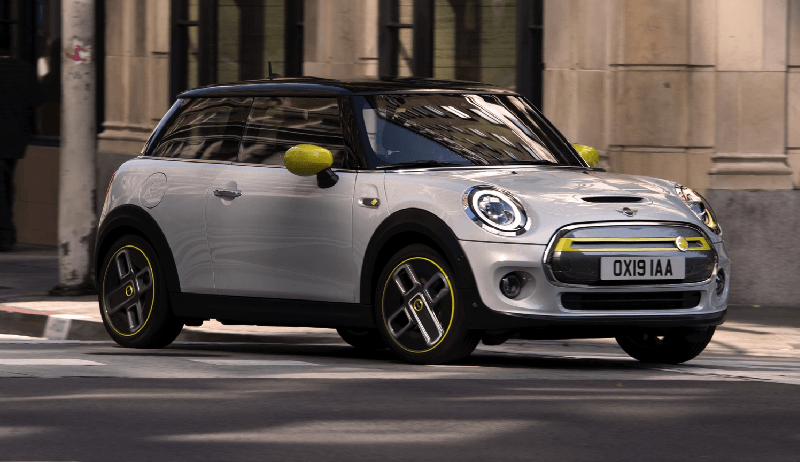
Honda E
If you’re looking for clean retro styling with tomorrow’s electric technology, Honda has got you covered. If you’ve read our next-generation Honda NSX review, you’ll know that the Japanese manufacturer is taking huge steps with electric technology – and there’s plenty of that tech in the modestly priced Honda E.
At around £26,000 the E is one of the best value electric cars on the road – and it goes between looking cute in white – to appearing every-inch the mean little city car in satin black. The retro styling continues inside with a beautiful side-to-side wood-effect dash with more screens that you’d expect to see on a NASA mission control desk. It might be small, but it’s packed with useful features.
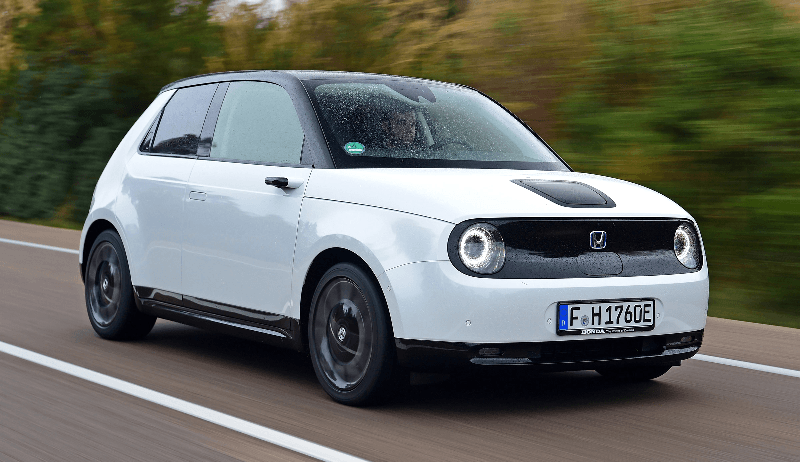
Nissan Leaf
The Leaf is one of the most popular EVs – and that’s largely down to the fact it’s been around much longer than most of its competitors.
Back in 2010, the Leaf had a very limited range – just 84 miles for the most basic models – but over time, this has increased to nearly 170 miles for the standard Leaf, and nearly 240 miles for the top-of-the-range ‘e+’ model.
The look of the Leaf has developed significantly over the last decade too. Previous incarnations looked slightly dull – but now, the sweeping signature Honda lights and more aggressive-looking front-end give the Leaf a much-needed edge in an increasingly competitive market.
At £30,000 it’s great value – even if the interior’s a little basic – and you can be confident that you’re getting time-proven technology that’s benefited from 10 years on UK roads.
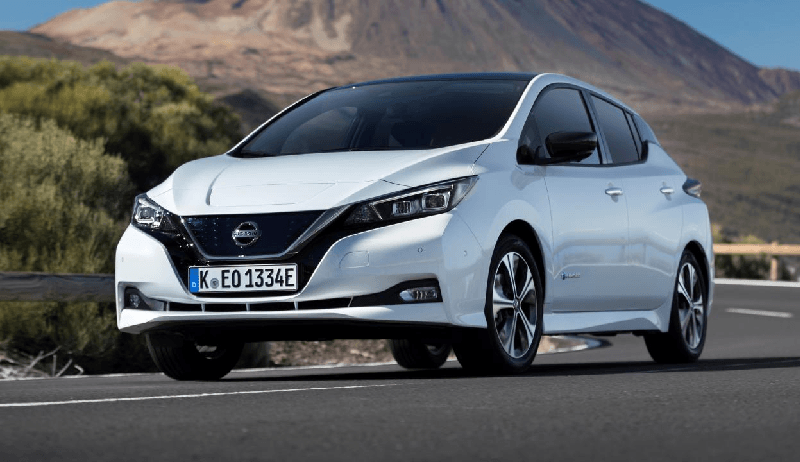
Renault Zoe
Although the Zoe hasn’t been around quite as long as Nissan’s Leaf, it’s not far off – so it’s another time-served EV that’s won a lot of fans over the last few years.
RRP is just short of £29,000 after your government grant – and that price includes a free home wall box with installation too, so with all that in mind, the Zoe starts to look like a bit of a bargain.
With a range of up 245 miles, Renault’s compact EV beats the Mini Electric hands down – but the styling isn’t quite as bold. Looking a lot like a smooth Clio, the Zoe doesn’t stand out as the next generation of personal transport – but it’s an absolute joy to drive around town. If you’re looking to go electric and you’re not concerned about stand-out looks or a plush interior, the Zoe’s a superb long-range, no-frills option.
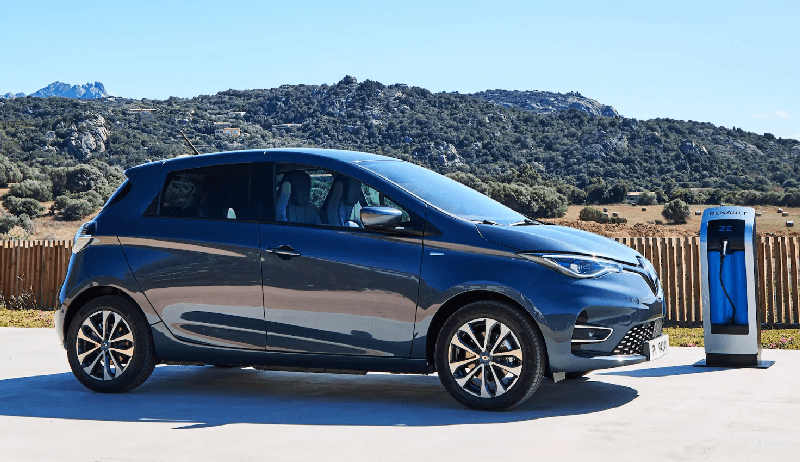
VW e-Up
Whether you’re looking at Polos, Golfs, or Passats; VWs are never the cheapest option – so you might be surprised to hear that you can pick up a new e-Up for less than £20,000.
As you might expect – there is a payoff for that low RRP – and with the e-Up, that comes in the form of a 99-mile range. Now, that’s not going to be much use if you’ve got a big journey to work – but assuming the range isn’t a problem, this is a heck of a lot of VW engineering for such a small price.
The uprated lithium-ion battery will charge to 80% full in just 60 minutes – which means it’s probably quicker to charge your e-Up than it is your iPhone. That’s where the practicality ends though – as there’s not much boot space or passenger room – but at this price, it’s a fantastic city-car option if you’re not going to be carrying much.

BMW i3
Again, you might not expect BMW to be competing with Nissan and Renault on price – but at just over £5,000 more than a Leaf, the i3 is an incredibly well-equipped and well-refined car for the money.
For fans of a bold look, the i3 still has that concept-car style that you see at a car show but never expect to hit the road, which makes it appealing to the kind of audience that will appreciate the Mini Electric’s looks too.
If you’re looking for a style and performance upgrade, you might decide to splash out on the i3S too. An additional 14bhp takes overall power up to just 184bhp – and bigger wheels, lower ride height and a wider track mean handling’s improved too.
The i3 is more costly than its rivals – but it’s still great value – and there are plenty of people who consider it to be the best city-car size EV currently on the road at any budget.

Top electric cars for families
Need a little more space for the family? Take a look at the best UK electric cars designed with passengers in mind:
Kia e-Niro
If you’re looking for Tesla-range without the Tesla price tag, the e-Niro’s likely to be the car for you. Kia’s family-size SUV has bagged more motor-industry awards than we can keep track of, partly due to the 280-mile range, but also down to the fantastic drive and level of onboard equipment too.
There aren’t many options when you buy an e-Niro – but that’s generally because the car comes full to the brim with equipment and features. As standard, you’ll get front and rear parking sensors, rear-view camera, electric windows and mirrors, climate control, privacy glass, auto lights and wipers, keyless entry, adaptive cruise control, heated leather seats, and even a heated leather steering wheel.
Performance is excellent too – there’s snappy acceleration and excellent handling, combined of course with tons of passenger space and boot space too. The only downside? They’re in high demand – so you might have to wait a while to get your hands on one!

Hyundai Kona Electric
Despite being developed as a traditional fuel vehicle first, the Hyundai Kona EV is universally considered to be superior to the family-size petrol/diesel vehicles it’s based on.
The range is almost as good as the e-Niro – with 270 miles from a full charge – although reports of a possible 300 miles or more come from owners who use their Kona purely around town.
The Kona’s exceptionally rapid too – it’ll do 0-60mph in around 7.5 seconds – which means you can confidently fit into gaps when you’re joining busy roads, and there’s plenty of instant power should you need it to overtake.
Unlike some cars in this list, there’s no smartphone app – which means you can’t check the remaining range without getting in the car, and there are no fancy pre-heating options to make cold mornings more bearable, but these are just tiny downsides to an otherwise excellent value and superb performance electric SUV.

Volvo XC40 Recharge
The XC40 already stands out as a contemporary-looking vehicle in the Volvo SUV range – so it was the obvious candidate to become an out-and-out EV when the time was right.
At £53,000, it’s bordering on being in our ‘luxury EV’ category – but it’s absolutely ideal as a family SUV, so it’s here – but you’ll need fairly deep pockets to make it a viable alternative to the e-Niro or Kona. That said, performance is a significant step-up from either of these alternatives – with a mighty 408hp that haul the XC40 along.
Last year, Volvo made a series of safety commitments that it applies throughout its range – as a result, the XC40 is fully loaded with excellent safety equipment, making it an ideal choice for safely transporting your family.

Tesla Model 3
It is not the most expensive nor the fastest car in the Tesla range – but you could certainly argue that it’s what Tesla has been aiming to deliver all along; a practical, cost-effective EV with an outstanding 250-320-mile range.
This makes the Tesla Model 3 a genuinely fantastic car – and, since it is a Tesla, it’s filled to the brim with exciting touches that make it feel like you’re driving into the future when you’re behind the wheel.
Prices start at £43,500 – and even at base-specification, you’ll get a car that’s quick enough to make C63 AMG drivers wonder what’s happening when you pull away from the lights together on a dual carriageway. Step up to the dual-motor Performance Model 3 and you’ll have the same effect on Aventador drivers. This kind of agility is an exciting prospect for a car that looks every inch the sensible family car – especially when it’s got the practicality to back up that claim.

Audi e-tron
Like the XC40, the Audi e-tron’s £59,000 price tag could see it in our ‘luxury’ category – but it’s an outstanding family vehicle that still represents great value at this price.
There’s tonnes of space in the e-tron, and comfort seems to have been right at the top of the list when the Audi designers and engineers did their thing. The cabin is jam-packed with tech and overall, the car stands out as being that little bit more special than other Audi SUVs.
The e-tron’s not the most agile of the big electric SUVs – but what it loses in backroad cornering ability, it more than makes up for in floaty comfort. If you want to arrive at your destination really recharged, the Audi might be the perfect choice for you.

Hyundai Ioniq
If you’re looking for a family car but electric car prices have put you off – say hello to the Hyundai Ioniq, quite possibly the best value electric car in the UK.
It’s not the biggest in the class – but it has plenty of space for a family of 5, and at £33,000, the price tag is more in line with what you’d expect to pay for a small city-car EV, instead of the £45,000+ prices you’d expect from their bigger stablemates.
In terms of range, you’ll squeeze nearly 200 miles out of an Ioniq – and while they’re not going to be the kind of exhilarating miles you’d get in a Tesla Model 3, the superb price and comfort of the Hyundai make it a great family car that’s truly excellent zipping around town.
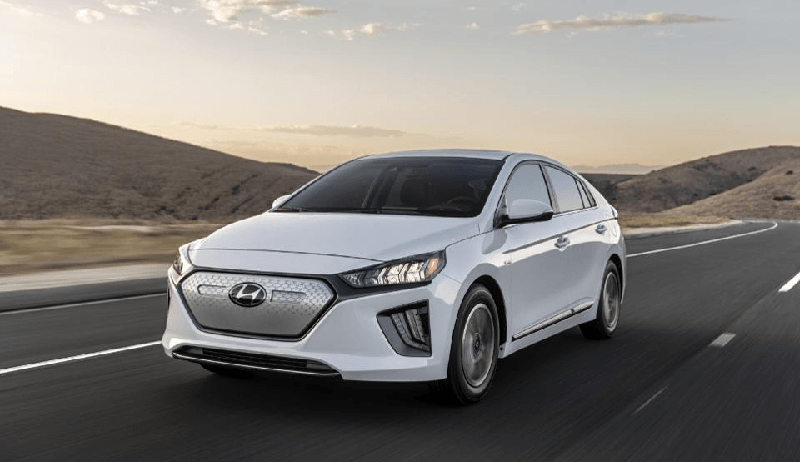
The best luxury/performance EVs
Ready to take a look at the most luxurious offerings electric car companies have got to offer?
Tesla Model X
The Model X is what happens when you combine supercar beating performance with SUV styling. It looks mean, and it’ll keep up with virtually anything in a straight line – but it also has 7 comfortable seats that make it extremely practical for the school run.
The big and boisterous Tesla SUV starts at around £90,000 – but if you want all the exciting power and options, you can easily see that price rise to nearly £170,000.
At a glance, you might think that the DeLorean-style gull-wing doors are just a gimmick – but they actually open in just 11-inches of space, making it absolutely perfect for loading the family in and out when you’re in a cramped car park.
It’s not cheap – and there are lots of better-looking ways to spend £100,000 or more on a car – but if you need super practicality and the option of over 350 miles of range, it’s just the ticket.
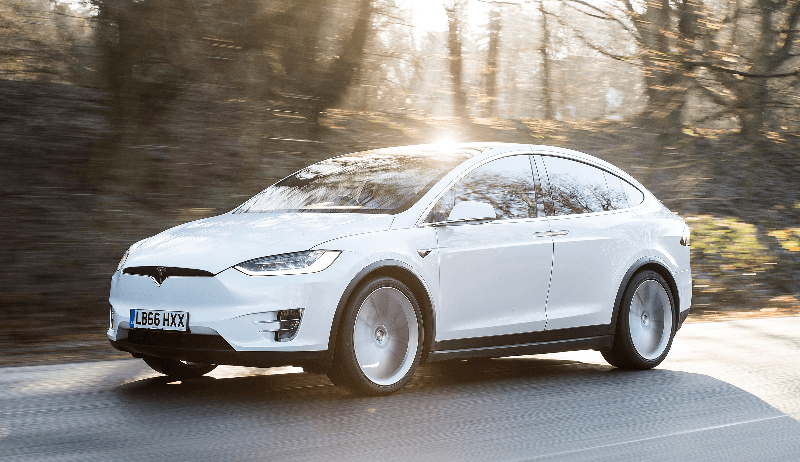
Tesla Roadster
Ready for another Tesla? It’s hard to imagine what Elon Musk’s team can bundle into a car that the Model 3, Model S, or Model X doesn’t already have covered – but when you realise that the Roadster can do 0-60 in less 1.9 seconds, the appeal of the Roadster becomes apparent.
As it stands, this sub-2 second 0-60 has Tesla pegging the Roadster as the quickest car in the world – and it certainly shaves time off the Bugatti Chiron and other monstrously powerful (and expensive) hypercars.
The Roadster comes with a price tag of around £200,000 – and while that’s expensive, it’s significantly more performance-per-pound than if your preference was for Italian flavoured petrol-powered cars with the same kind of stats.

Jaguar I-Pace
There are some electric cars that you’ll want to own simply because they’re electric – but on the other hand, the Jaguar I-Pace is a car that looks so good you’ll want the design on your drive, regardless of how its power is produced.
The I-Pace has been crafted from the ground up using all of Jaguar’s proud racing heritage. As a result, it performs outstandingly, producing 394hp, 513lbs ft of torque – and it boasts almost 300 miles of claimed range.
Prices begin at around £60,000 – and a fully-spec’d First Edition will be closer to £77,000, but for that, you get a family-friendly SUV that’s got all the hallmarks and design characteristics of the brand’s exceptional sportscar range – not just an F-Pace with a battery in the floor.

Porsche Taycan
Not everyone is excited about the arrival of electric cars – but the Porsche Taycan goes some way to alleviating the fears of people who are worried that the next couple of decades will mean kissing the sports car experience goodbye.
Despite being obviously electric; the Taycan looks, feels, accelerates, and handles like a Porsche. It’s not a small Panamera; it’s got the all-important soul of a 911 – it’s just one that needs to be plugged in now and again.
You could argue that the performance Teslas are for electric car fans – whereas the Porsche Taycan is an EV for car fans. It certainly feels that way if you compare the two cars on a twisty road – and the Porsche dominates on the Nurburgring. Prices start at around £85,000 – and expect to pay £140,000 if you want your Taycan in the company’s signature ‘Turbo S’ configuration.

Mercedes EQC
It’s another family-size SUV – but at £70,000+, this is another one that’s landed in our luxury range. The EQC is a real triumph for Mercedes – it’s the perfect blend of performance, tech, and luxury.
With a range of around 250 miles and a peak motor output of 402bhp, the EQC packs plenty of power – but never lacks comfort. In fact, despite the electric motor being a far more-costly option compared to a combustion engine, there are no compromises – this feels every inch the £70,000 Mercedes experience.
Some electric cars are styled to let the world know they’re electric – but the EQC is more subtle. The grille is blanked off – but you can’t tell at a glance, so aside from the silence, Mercedes electric SUV offering fits in perfectly with their luxury range – this one just happens to be electric.

Top electric cars for 2021 and beyond
EVs are developing at a blistering rate – so we take a glimpse at some of the most exciting upcoming electric cars that’ll hit the market in late-2020/early-2021 and beyond.
Tesla Cybertruck
It’s difficult to pinpoint exactly who the Tesla Cybertruck is aimed at – but Elon Musk never let our feeble imaginations stand in the way of an exciting project.
The Cybertruck is certainly exciting. It’s reasonable to think of the ultra-futuristic electric twin-cab pickup as an ‘end of the world ready’ vehicle – it will be available as an AWD – in both dual and triple motors, so a top-spec truck will out-accelerate most supercars too.
If you prefer your vehicles rugged and looking like they’re carved from a block of granite; then the Tesla Cybertruck will be right up your street when they begin rolling off the production line in 2021.
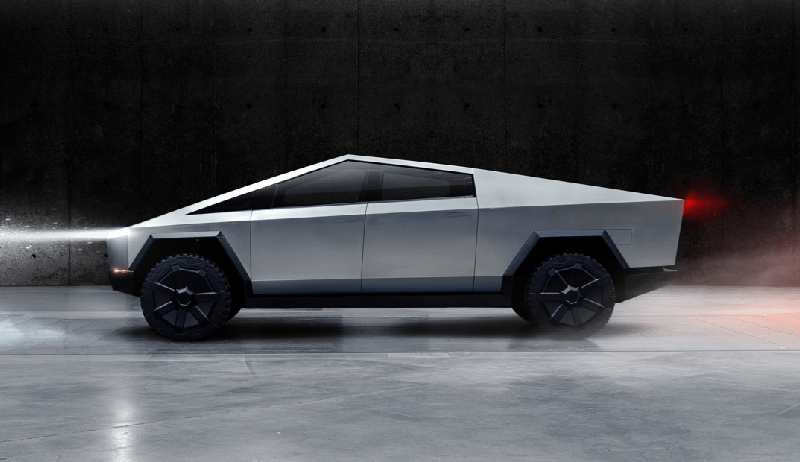
VW ID.3
The VW Golf Electric is the perfect family car – so why isn’t it on our list?
Well, it’s because it doesn’t exist in 2020. You may be able to pick up a pre-registered car – but VW hasn’t produced any for 2020, opting instead to develop the ID.3 – a direct replacement.
The ID.3 is a hugely important project for VW – and the first cars will appear on UK roads in September 2020. The price is anticipated to be around £39,000. Like the Golf, the ID.3 will be available in a wide variety of power outputs – from a 125bhp 45kWh Pure spec – up to a Pro spec 58kWh, RWD 201bhp version that’s apparently good for 260 miles.
It might not have the wow-factor of Tesla tech, but if it’s as good as the Golf, the ID.3 could quickly become the most popular electric car in the UK.

Aspark Owl
If the idea of an electric Golf replacement is a little dull for your liking, the Aspark Owl will jolt you back to life.
With an anticipated 0-60mph time of 1.69seconds and a top speed of 249mph, the Owl is Japanese company Aspark’s shot at creating the world’s fastest EV. What’s more, it looks like all the best bits of a McLaren P1, a Lamborghini Aventador, and a LaFerrari sculpted into one.
The cost? Not far off the price of a P1, Aventador, and LaFerrari all combined into one also - £2.5million. You’ve got until the end of 2020 to win the lottery.

Tesla Model Y
In late-2020, Tesla aims to be delivering the Model Y to UK customers. It’s a compact SUV for people who don’t want or need the performance and size of the Model X.
It’s worth thinking of the Y as a Model 3 SUV – and this is a great thing, the Model 3’s been amazingly well-received by the motoring world – and with long-distance options, the 3 (and therefore the Y) are capable of nearly 320 miles before recharging.
With 7 seat options available and plenty of performance, the Y could replace the Model X as the benchmark for electric SUVs – especially since it’s half the price.
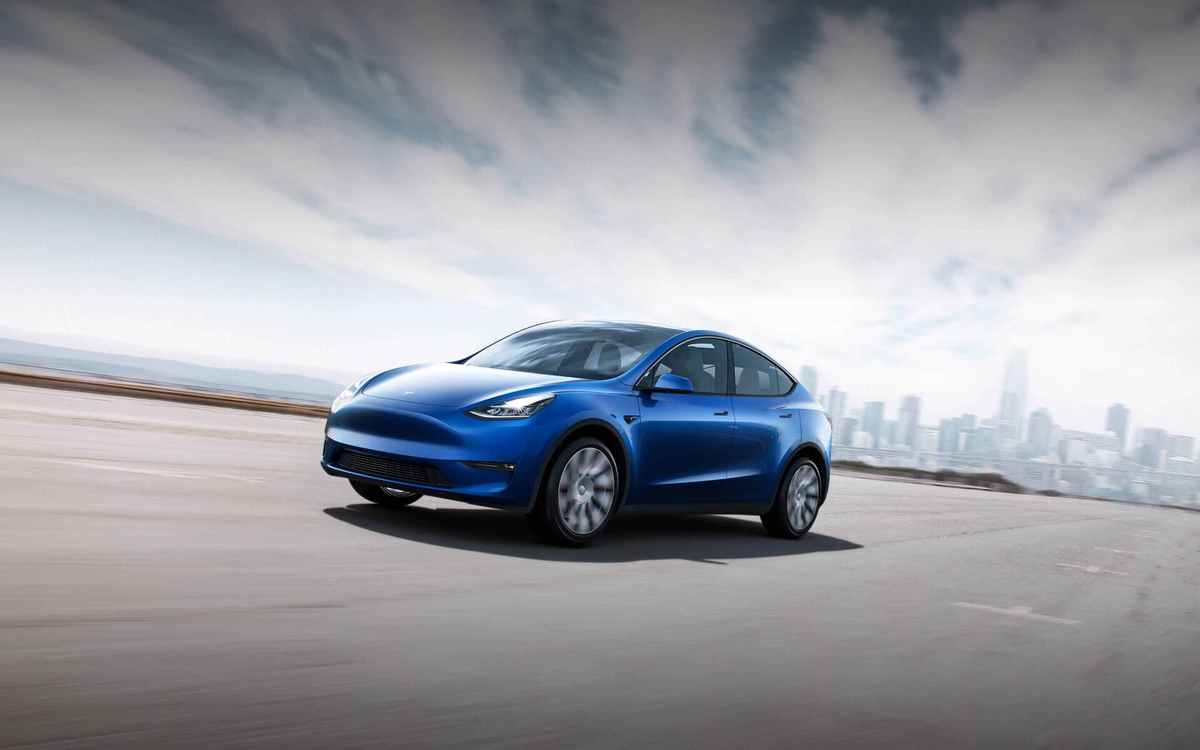
Lotus Evija
If the Aspark Owl is a little expensive for your taste but you still want nearly 2,000 horsepower from your car – the Lotus Evija is the British electric car for you.
When it enters production in late-2020, the Evija will command a price tag of £1.5 million – and if you’re fortunate enough to cast your eyes upon one in the flesh, you’ll feel that every penny of that asking price is justified.
A modest 70KwH battery pack will power the Lotus – but don’t let the size of battery fool you; this one’s been developed in partnership with Williams Advanced Engineering – so it’s going to be powering a 490bhp motor at every wheel.
Dacia Spring
Dacia delivers some of the UK’s best value cars – and any Duster owner will tell you that there’s enough specification stuffed into the car to warrant double the tough little SUV’s asking price.
So, what will an electric Duster-type vehicle look like? From initial press release shots, the Spring looks like a Duster that’s been given a similar makeover to the Mini Electric – some neon flashes and a futuristic makeover.
There are no prices available yet – but sources suggest it could be as low as £16,000 with a 100-mile range. Are we about to see the UK’s most affordable electric car?
Ready to make the switch to electric?
From practical daily drivers to exotic electric supercars, there are plenty of options on this list of electric car reviews to tempt virtually any driver over to an EV.
With this in mind, we’ve answered some of the most frequently asked questions about electric vehicles and EV ownership.

How much is electric car tax?
Car tax is officially known a Vehicle Excise Duty (VED) – and today, it applies to vehicles that produce any amount of CO2 emissions.
Since fully electric vehicles produce no CO2, they are exempt from paying VED.
The .GOV website explains that “The electricity your vehicle uses must come from an external source or an electric storage battery that is not connected to any source of power when the is moving to be exempt.”
This means that purely battery-operated EVs – sometimes referred to as BEVs – are exempt, but hybrids are not.
You’ll still need to apply for road tax as you would with any other vehicle, but there will be no payment to make.
What are servicing costs like for electric cars?
Generally speaking, a service on a traditional fuel vehicle will concentrate on the moving mechanical components that keep the car moving – like the engine and the transmission. Electric vehicles don’t have these parts – certainly not in the same way that a petrol or diesel car does – so they don’t require the same type of service.
Of course, there are still things like tyres and wipers that need to be checked, maintained, and replaced – but even braking components are less likely to need replacing on an EV; since regenerative braking that uses the electric motor(s) of the car takes some strain off the discs and pads.
Industry research suggests that service and maintenance costs for a fully-electric car are at least 23% cheaper than the costs associated with a traditional fuel vehicle – so even if you’re paying a little more for your EV upfront, you’re likely to be saving on running costs across the board.
What happens if my electric car runs out of power?
If you’re the kind of person who panics when they’re away from a charger and their phone hits 15% – you’ll probably find yourself a victim of ‘range anxiety’ in your EV too.
The good news is, it’s difficult to run out of charge in an electric car – as you’re going to have to keep going through a variety of warnings and interventions by the car’s onboard computer.
As with most modern petrol and diesel vehicles, the best EV cars of 2020 all show you how much range you have left – and if you’ve somehow missed that it’s getting low, every EV has the facility to direct you to a local charger that’ll mean you can get some juice into the battery.
You’ll also find that many electric car manufacturers build in a low-power or eco mode too – cutting back on the vehicle’s additional systems to extend the range as much as possible. These modes tend to shut off things like air-con and heated seats, in favour of keeping as much battery life as possible for keeping the car moving.
If worst-comes-to-worst and you do end up running out – effectively breaking down – you’ll need to get your car recovered by a breakdown service or recovery firm. They’ll take you to the nearest charge point – then plugging in and waiting for the car to top-up again will fix the problem. Increasingly, recovery services are carrying portable charging units too – so you may find that you can get a quick boost at the roadside that’ll get you home.

